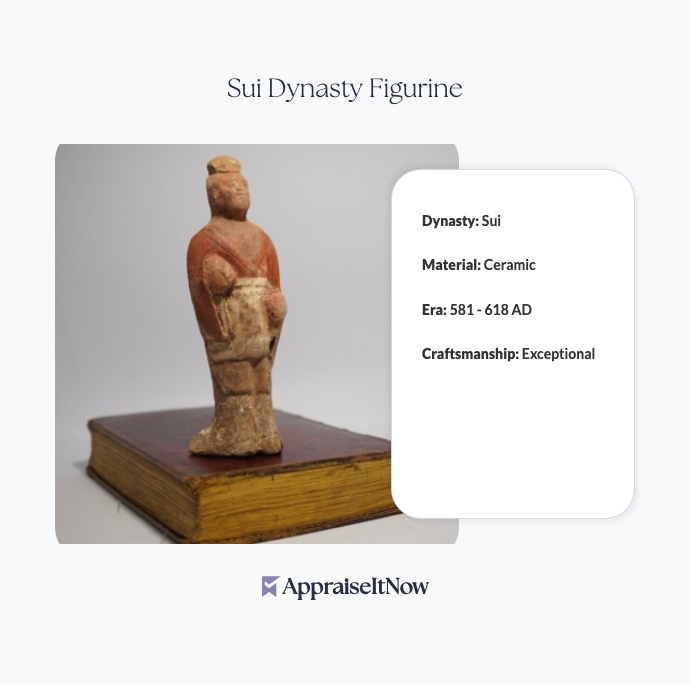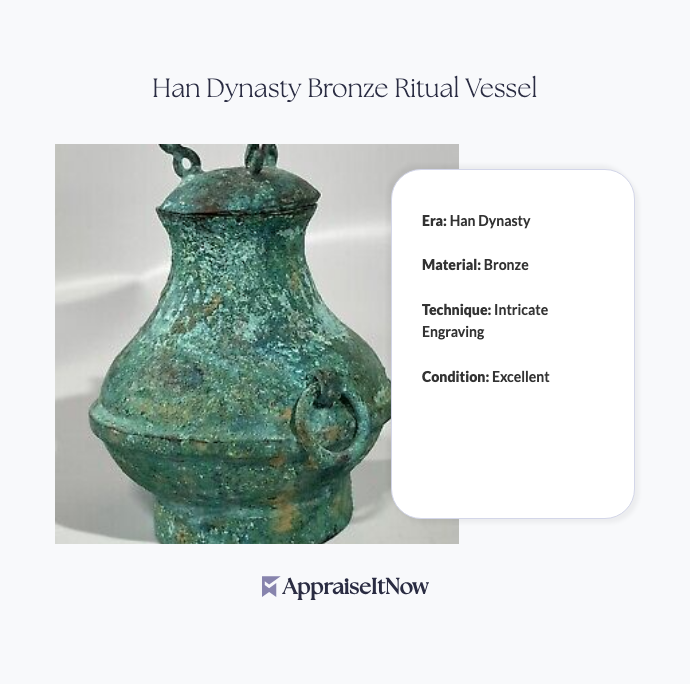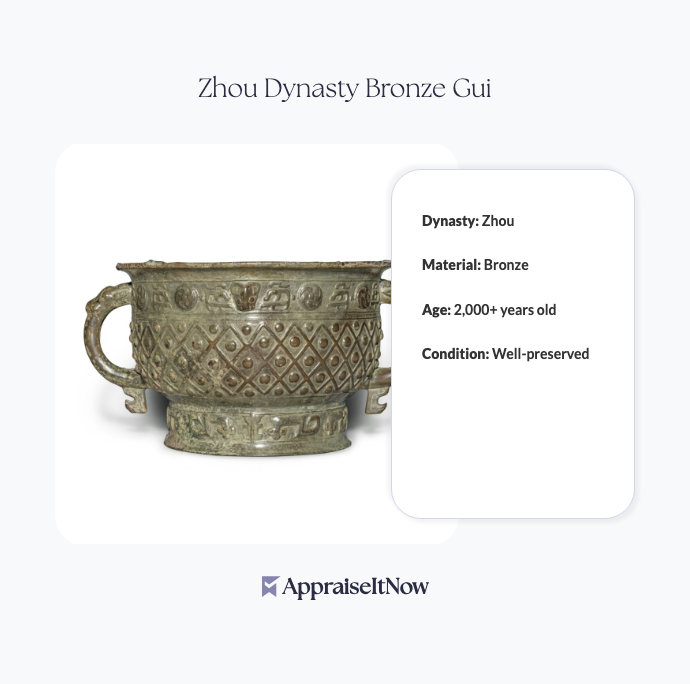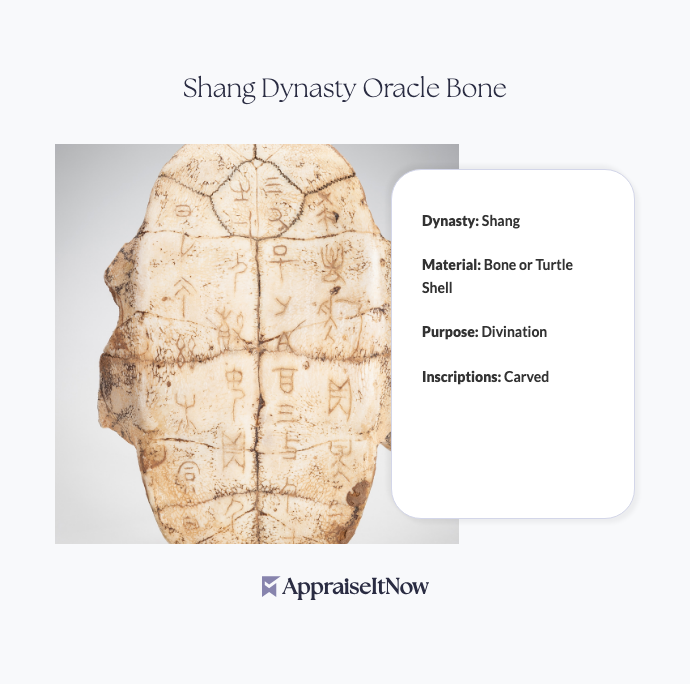<h1>How to Get Your Tang Dynasty Horse Sancai Appraised</h1>
<p>The Tang Dynasty Horse Sancai represents one of the most sought-after ceramic treasures from ancient China, commanding estimated values between <strong>$40,000 and $50,000</strong> in today's collector market. Whether you've inherited a family heirloom, discovered a piece in an antique shop, or are evaluating one for acquisition, understanding how to properly appraise this iconic figurine ensures you make informed decisions backed by expertise and documentation.</p>
<h2>What Makes Tang Dynasty Horse Sancai So Valuable?</h2>
<p>The Tang Dynasty Horse Sancai is far more than decorative pottery—it's a window into seventh to ninth-century Chinese artistry and imperial culture. These polychrome glazed ceramic horses emerged during the Tang Dynasty era when Chinese ceramics reached unprecedented technical sophistication and global influence. The term "sancai" literally means "three colors" in Chinese, referring to the vibrant palette of green, yellow, and white glazes that define these pieces.</p>
<p>What elevates your Tang horse's value is the convergence of several factors: exceptional craftsmanship in depicting the stylized equine form with grace and power, the rarity of well-preserved examples, significant historical importance as artifacts of a golden age in Chinese civilization, and widespread museum recognition of their artistic merit. These horses appeared in imperial tombs as symbols of wealth, trade, and cultural achievement, making them deeply important to understanding Tang Dynasty society.</p>
<div class="callout tip"><p><strong>Collector's Insight</strong></p>
<p>Tang Dynasty horses with documented provenance—particularly those with clear ownership histories or museum exhibition records—command premium valuations of 15-25% above comparable pieces without established backgrounds.</p></div>
<h2>Understanding Sancai Ceramics and Regional Production</h2>
<p>To properly evaluate your Tang horse, you should understand how sancai ceramics fit within broader Chinese ceramic traditions. Sancai ware represents a distinctive production technique where glazes were applied in separate layers, with colors pooling in recessed areas to create visual depth and richness. While sancai ceramics were first made across multiple regions during the Tang Dynasty, particularly in kilns near Chang'an (modern-day Xi'an), the technique developed through continuous refinement and regional variations.</p>
<p>The three colors found on your Tang horse—green from copper oxide, yellow from iron oxide, and white from the base glaze—weren't arbitrary choices but represented deliberate artistic and technical decisions. Understanding this technical mastery helps appraisers verify authenticity, as modern reproductions often struggle to replicate the glaze chemistry and firing characteristics of genuine Tang pieces. When exploring <a href="/blog/appraising-fine-porcelain-and-ceramics-valuing-delicate-artistry">appraising fine porcelain and ceramics</a>, specialists examine these specific glazing techniques as authentication markers.</p>
<h2>Key Specifications That Impact Appraisal Value</h2>
<p>Several technical and aesthetic characteristics directly influence your Tang horse's appraised value. Height matters significantly—most Tang horses range from 12 to 24 inches, with larger, well-proportioned examples commanding higher valuations. The horse's pose is equally important: spirited, dynamic stances depicting movement fetch greater premiums than static standing positions.</p>
<p>Glaze condition represents perhaps the most critical factor. Original glaze with patina and age-appropriate wear indicates authenticity, while pieces showing suspicious uniformity or modern-looking surfaces raise authentication concerns. The strength and adherence of glazes, the presence of kiln dust or firing marks, and the way glaze settled during firing all provide appraisers with evidence of genuine Tang-era production methods.</p>
<p>Clay body characteristics reveal authenticity through the weight, sound when tapped, and visible composition. Genuine Tang horses display specific clay preparations with particular mineral content reflecting period mining practices. Kiln marks, stacking scars, or stiletto holes on the base offer physical evidence of ancient firing techniques that modern makers struggle to replicate convincingly.</p>
<div class="callout note"><p><strong>Authentication Detail</strong></p>
<p>Professional appraisers use X-ray fluorescence testing and thermoluminescence analysis to verify clay composition and confirm firing dates, providing scientific validation alongside visual assessment.</p></div>
<h2>Market Dynamics and Comparable Sales</h2>
<p>The Tang Dynasty horse market has experienced steady appreciation over the past two decades, reflecting growing international appreciation for Chinese cultural heritage. Comparable pieces—horses of similar size, condition, and glaze completeness—sold at major auction houses between $35,000 and $55,000 in recent years. A particularly fine example with exceptional provenance might exceed the upper range, while pieces showing damage or heavy restoration typically fall below $40,000.</p>
<p>Understanding where your horse fits within this range requires comparative analysis. Museums worldwide, including the Metropolitan Museum of Art, the British Museum, and the Palace Museum in Beijing, maintain extensive Tang ceramic collections that provide valuation benchmarks. When exploring <a href="/blog/appraising-asian-art-and-antiques-understanding-cultural-significance-and-value">appraising Asian art and antiques</a>, specialists reference these institutional holdings to establish market context and rarity assessments.</p>
<p>Regional origin matters to collectors—horses from imperial production centers carry historical significance beyond their artistic merit. Documentation indicating provenance, exhibition history, or scholarly publication dramatically strengthens appraisal values. The question of how to determine if Chinese pottery is valuable hinges on these authentication and provenance elements combined with condition assessment.</p>
<h2>Condition Assessment and Its Impact</h2>
<p>Your Tang horse's physical condition significantly affects its appraised value within the $40,000-$50,000 range. Intact examples with original glaze surfaces, no restorations, and complete anatomical features command top-tier valuations. Pieces showing minor age-related wear—subtle glaze crazing, slight dust accumulation in recesses, or minor glaze chips in inconspicuous areas—typically retain 90-95% of maximum value.</p>
<p>Restoration history substantially impacts pricing. Professional conservation work that maintains historical integrity while stabilizing deteriorating material typically reduces values only 10-15%, whereas heavy-handed restorations involving regluing significant pieces, repainting, or reconstructing major sections can reduce value by 40-50% or more. This distinction mirrors how <a href="/blog/the-impact-of-restoration-and-conservation-on-art-appraisals-balancing-preservation-and-value">restoration and conservation affect art appraisals</a>, where the approach to previous work dramatically influences market positioning.</p>
<p>Chips, cracks, or glaze loss require careful documentation. Small surface losses in less visible areas create minimal value reduction, while damage affecting facial features or the horse's legs substantially diminishes appeal. Active moisture problems, root damage, or structural instability creating risk of further deterioration significantly depress valuations.</p>
<h2>Provenance and Documentation Importance</h2>
<p>The ownership history and documented exhibition record of your Tang horse profoundly influence its appraised value. Pieces with clear provenance—particularly those with scholarly publication, museum exhibition, or collection catalogs documenting their history—command substantial premiums. This emphasis on provenance reflects the growing importance of ethical acquisition in the art and antiquities market, where establishing legal import and ethical collection practices has become essential for serious collectors and institutions.</p>
<p>When seeking appraisal services, compile whatever documentation exists: photographs from previous exhibitions, insurance appraisals, auction house catalogs, family records indicating acquisition date and source, or any scholarly references. Even incomplete provenance documentation helps appraisers establish your horse's historical trajectory and verify authenticity through comparative analysis with documented examples. Understanding <a href="/blog/exploring-the-role-of-provenance-in-art-appraisals-assessing-historical-significance">the role of provenance in art appraisals</a> reveals why this documentation translates directly into appraised value.</p>
<div class="callout tip"><p><strong>Documentation Strategy</strong></p>
<p>Photograph your Tang horse from multiple angles, include scale reference, and document any markings, signatures, or manufacturing details. These images support professional appraisal and help establish baseline documentation for future reference or insurance purposes.</p></div>
<h2>Why Professional Appraisal Matters</h2>
<p>Obtaining a certified appraisal from a qualified expert provides multiple essential benefits beyond establishing market value. A professional appraiser brings specialized knowledge of Tang Dynasty ceramics, authentication techniques, market comparables, and current collector preferences. They can identify regional production variations, recognize later imitations or reproductions, and establish your horse's position within the broader collecting landscape.</p>
<p>Professional appraisals serve critical purposes: establishing insurable values for homeowner or collector insurance policies, providing documentation for estate planning or tax purposes, supporting purchase or sale transactions, and creating permanent records protecting your investment. When exploring resources on <a href="/blog/what-do-appraisers-look-for-when-appraising-antique-artwork">what appraisers look for when appraising antique artwork</a>, you'll find that Tang ceramics require specialized knowledge of glaze chemistry, kiln technology, and historical context that generalist appraisers may lack.</p>
<p>The certified appraisal also provides legal documentation accepted by insurance companies, financial institutions, and courts. Unlike informal estimates or auction house valuations tied to sale transactions, a USPAP-compliant appraisal offers independent, professional assessment based on established market data and expert analysis. This documentation proves particularly valuable when pieces are involved in estate settlements, insurance claims, or donation scenarios requiring verified valuations.</p>
<h2>Choosing the Right Appraiser</h2>
<p>Not all appraisers possess equal expertise with Tang Dynasty ceramics. Seek professionals with specific experience in Asian art and antiques, ideally those credentialed through organizations like the <strong>American Society of Appraisers (ASA)</strong>, <strong>International Society of Appraisers (ISA)</strong>, <strong>American Academy of Appraisers (AAA)</strong>, or the <strong>Appraisers Association of America (AAA)</strong>. These credentials indicate professional training, ethical standards, and adherence to the <strong>Uniform Standards of Professional Appraisal Practice (USPAP)</strong>.</p>
<p>Your appraiser should be able to discuss Tang ceramics with authority, explain authentication methods, reference comparable sales, and provide detailed written documentation of their findings. Many appraisers at established firms like <strong>AppraiseItNow</strong> specialize in <a href="/blog/appraising-artifacts-and-antiquities-evaluating-historical-finds">appraising artifacts and antiquities</a> and can provide the specialized assessment your Tang horse deserves. Ask prospective appraisers about their training with Asian ceramics, their access to comparative market data, and their experience with thermoluminescence or other scientific authentication methods.</p>
<h2>Storage and Preservation Considerations</h2>
<p>Proper care between now and your appraisal preserves your Tang horse's value. Store the piece in a climate-controlled environment maintaining 45-55% relative humidity and 65-75°F temperature. Avoid direct sunlight, which can fade glazes over time, and keep the horse away from heating vents, air conditioning units, or moisture-prone areas. Display on stable, padded shelving rather than precarious positions where vibration or accidental contact could cause damage.</p>
<p>Handle your Tang horse minimally and only when necessary, using both hands with clean, dry skin or soft cotton gloves. Never attempt cleaning with water or chemicals—accumulated patina and kiln dust contribute to authenticity assessment and value. When the appraisal is complete, consider appropriate insurance based on the professional valuation, ensuring your investment is protected against loss or damage.</p>
<div class="callout note"><p><strong>Key Takeaway</strong></p>
<p>A certified appraisal of your Tang Dynasty Horse Sancai from a qualified specialist ensures accurate valuation, proper documentation, and expert authentication. Whether you're buying, selling, insuring, or preserving this remarkable piece of ancient Chinese artistry, professional assessment provides the confidence and credibility necessary for informed decision-making backed by market expertise and USPAP standards.</p></div>
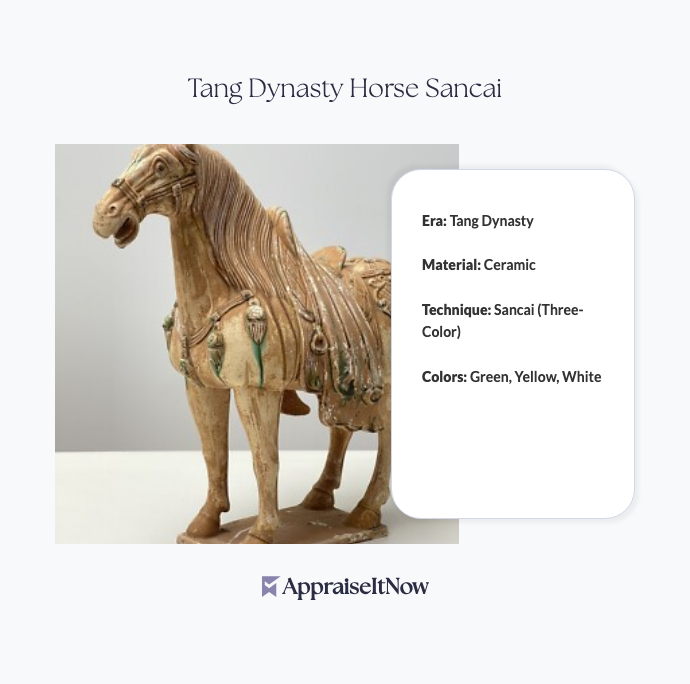






.avif)




